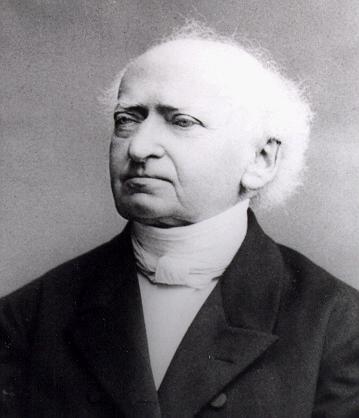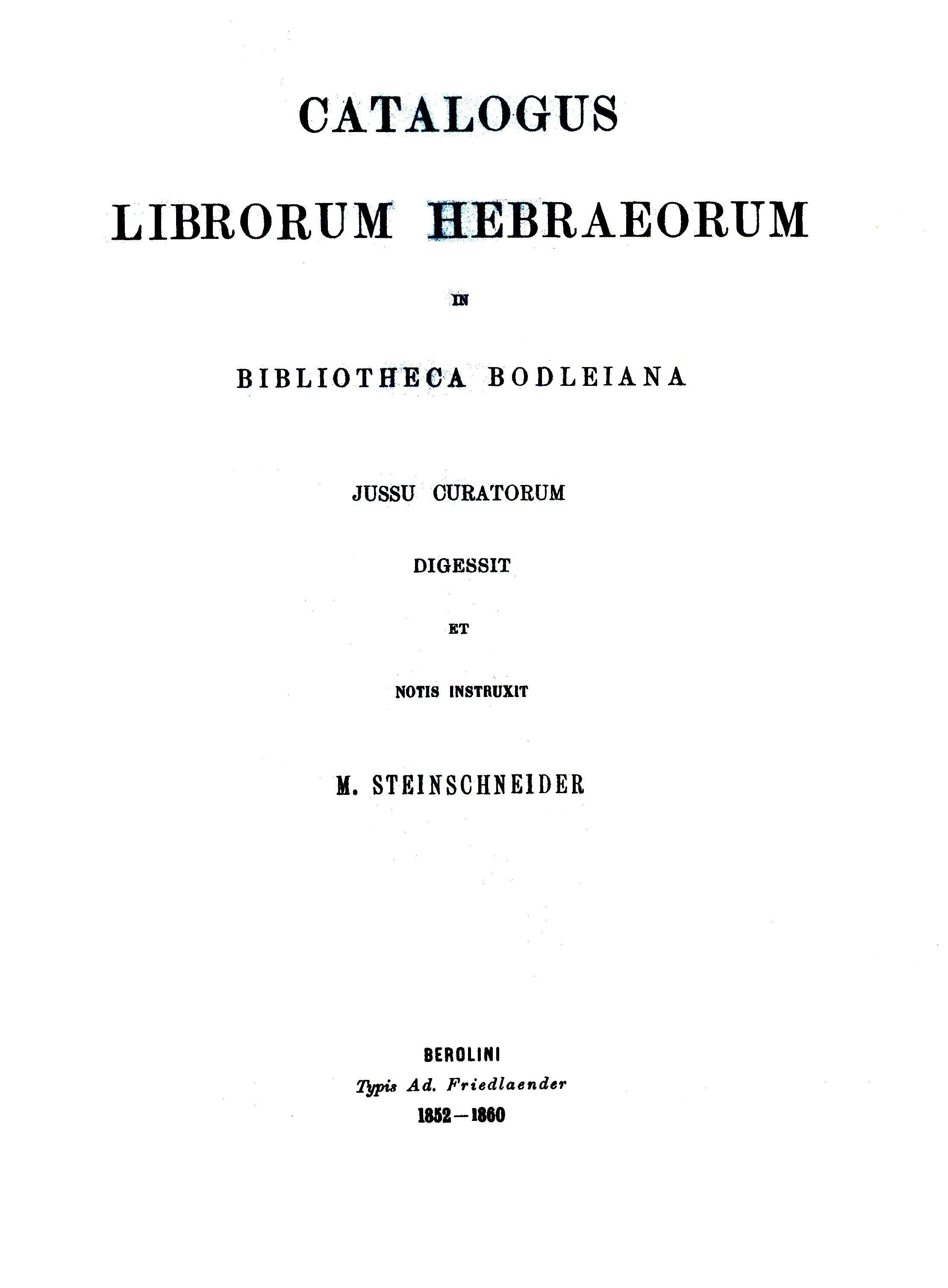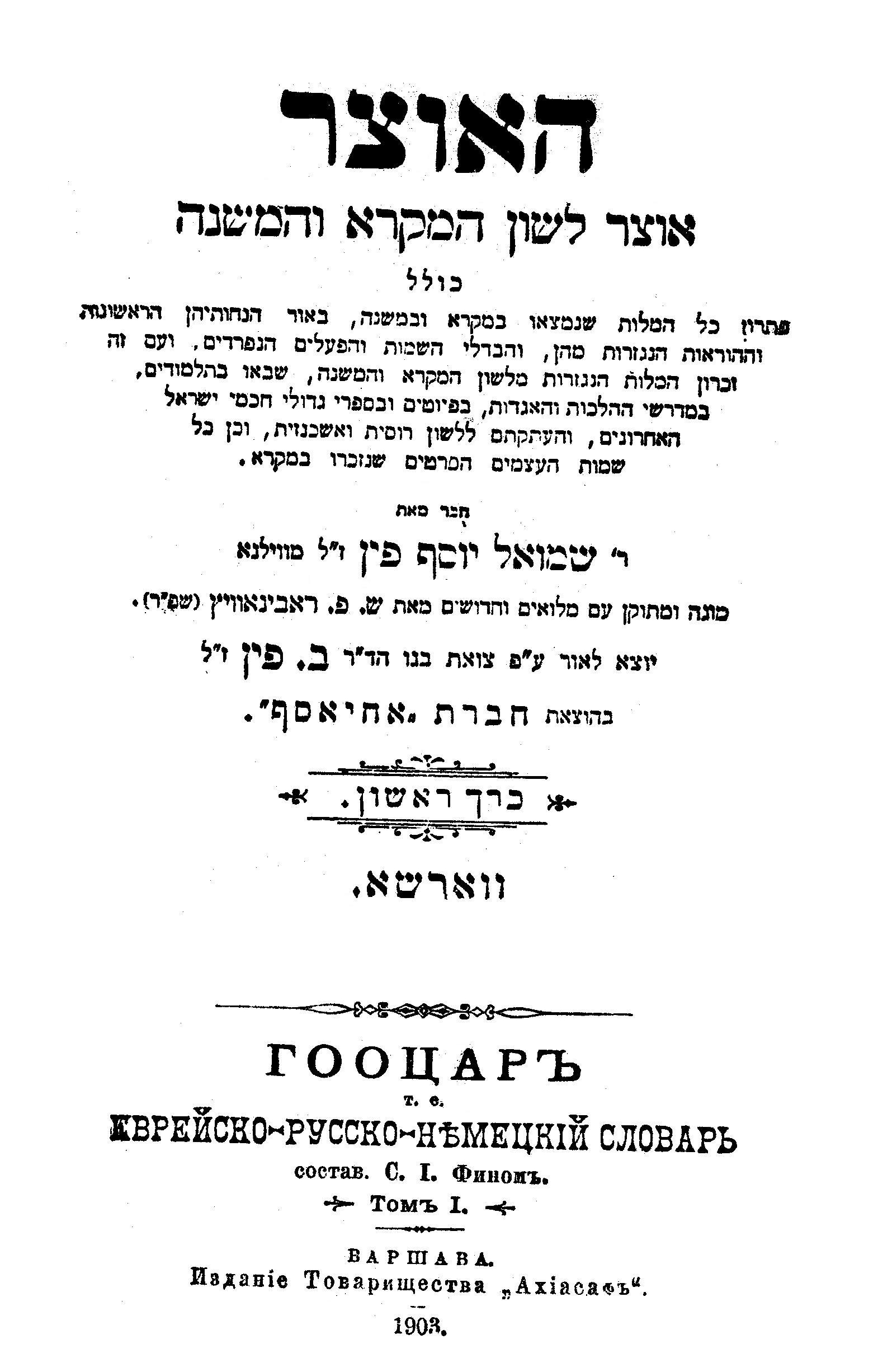|
Jacob Fano
Jacob ben Joab Elijah da Fano was an Italian rabbi and Hebrew poet; he lived at Ferrara and Ancona about the middle of the sixteenth century. He was the teacher of Abraham Portaleone. Works He wrote: "Shilṭe ha-Gibborim," a rhythmical poem warning men against women, and "Ḳinah," an elegy in verse on the persecution of the Jews at Ancona, published together at Ferrara, 1556; "Zoker ha-Berit," a treatise on the commandments, which formed the first part of his "Petaḥ Tiḳwah," no longer extant. He is generally supposed to have been the author of the "Ḳiẓẓur Ḥobot ha-Lebabot," Venice, 1655, a compendium of Baḥya's "Ḥobot ha-Lebabot." References *Zunz, in Geiger's Wiss. Zeit. Jüd. Theol. iii. 56; *Franz Delitzsch, Zur Gesch. der Hebräischen Poesie, p. 173; *Steinschneider Moritz Steinschneider (30 March 1816, Prostějov, Moravia, Austrian Empire – 24 January 1907, Berlin) was a Moravian bibliographer and Orientalist. He received his early instruction in ... [...More Info...] [...Related Items...] OR: [Wikipedia] [Google] [Baidu] |
Ferrara
Ferrara (, ; egl, Fràra ) is a city and ''comune'' in Emilia-Romagna, northern Italy, capital of the Province of Ferrara. it had 132,009 inhabitants. It is situated northeast of Bologna, on the Po di Volano, a branch channel of the main stream of the Po River, located north. The town has broad streets and numerous palaces dating from the Renaissance, when it hosted the court of the House of Este. For its beauty and cultural importance, it has been designated by UNESCO as a World Heritage Site. History Antiquity and Middle Ages The first documented settlements in the area of the present-day Province of Ferrara date from the 6th century BC. The ruins of the Etruscan town of Spina, established along the lagoons at the ancient mouth of Po river, were lost until modern times, when drainage schemes in the Valli di Comacchio marshes in 1922 first officially revealed a necropolis with over 4,000 tombs, evidence of a population centre that in Antiquity must have played a major r ... [...More Info...] [...Related Items...] OR: [Wikipedia] [Google] [Baidu] |
Ancona
Ancona (, also , ) is a city and a seaport in the Marche region in central Italy, with a population of around 101,997 . Ancona is the capital of the province of Ancona and of the region. The city is located northeast of Rome, on the Adriatic Sea, between the slopes of the two extremities of the promontory of Monte Conero, Monte Astagno and Monte Guasco. Ancona is one of the main ports on the Adriatic Sea, especially for passenger traffic, and is the main economic and demographic centre of the region. History Greek colony Ancona was populated as a region by Picentes since the 6th century BC who also developed a small town there. Ancona took a more urban shape by Greek settlers from Syracuse in about 387 BC, who gave it its name: ''Ancona'' stems from the Greek word (''Ankṓn''), meaning "elbow"; the harbour to the east of the town was originally protected only by the promontory on the north, shaped like an elbow. Greek merchants established a Tyrian purple dye fa ... [...More Info...] [...Related Items...] OR: [Wikipedia] [Google] [Baidu] |
Abraham Portaleone
Abraham Portaleone (died July 29, 1612) was an Italian-Jewish physician in Mantua. He was a pupil of Jacob Fano. Life The Dukes Guglielmo and Vincenzo of Mantua, in whose service he was, granted him privileges in 1577 and 1587 respectively; and Pope Gregory XIV Pope Gregory XIV ( la, Gregorius XIV; it, Gregorio XIV; 11 February 1535 – 16 October 1591), born Niccolò Sfondrato or Sfondrati, was head of the Catholic Church and ruler of the Papal States from 5 December 1590 to his death in October .... gave him a dispensation which enabled him to attend Christians. Works At the request of Duke Guglielmo he wrote two medical treatises in Latin, which he dedicated to his patron, under the titles ''Consilia Medica'' and ''Dialogi Tres de Auro'' respectively; the latter treatise was published in 1584. His ''Shilte ha-Gibborim'' (or ''Shiltei'', meaning ''shields of the heroes'' – other works share this title) was an encyclopedic work that related arts and sciences to the ... [...More Info...] [...Related Items...] OR: [Wikipedia] [Google] [Baidu] |
Baḥya
Bahya ben Joseph ibn Paquda (also: Pakuda, Bakuda, Hebrew: , ar, بهية بن فاقودا), c. 1050–1120, was a Jewish philosopher and rabbi who lived at Zaragoza, Al-Andalus (now Spain). He was one of two people now known as Rabbeinu Behaye, the other being Bible commentator Bahya ben Asher. Life and works He was the author of the first Jewish system of ethics, written in Arabic around 1080Diana Lobel, ''A Sufi-Jewish Dialogue: Philosophy and Mysticism in Bahya ibn Paquda's "Duties of the Heart"'', Introduction, text: "The Hidāya was written in Judeo-Arabic around 1080." under the title ''Al Hidayah ila Faraid al-Qulub'', ''Guide to the Duties of the Heart'', and translated into Hebrew by Judah ibn Tibbon in the years 1161-80 under the title '' Chovot HaLevavot'', ''The Duties of the Heart''. Little is known of his life except that he bore the title of ''dayan'', judge at the rabbinical court. Bahya was thoroughly familiar with the Jewish rabbinic literature, as well as ... [...More Info...] [...Related Items...] OR: [Wikipedia] [Google] [Baidu] |
Leopold Zunz
Leopold Zunz ( he, יום טוב צונץ—''Yom Tov Tzuntz'', yi, ליפמן צונץ—''Lipmann Zunz''; 10 August 1794 – 17 March 1886) was the founder of academic Judaic Studies ('' Wissenschaft des Judentums''), the critical investigation of Jewish literature, hymnology and ritual.Nahum Glatzer, Pelger Grego"Zunz, Leopold" ''Encyclopaedia Judaica'' (2nd ed., 2007) Zunz's historical investigations and contemporary writings had an important influence on contemporary Judaism. Biography Leopold Zunz was born at Detmold, the son of Talmud scholar Immanuel Menachem Zunz (1759-1802) and Hendel Behrens (1773-1809), the daughter of Dov Beer, an assistant cantor of the Detmold community. The year following his birth his family moved to Hamburg, where, as a young boy, he began learning Hebrew grammar, the Pentateuch, and the Talmud. His father, who was his first teacher, died in July 1802, when Zunz was not quite eight years old.Kaufmann, David (1900).Zunz, Leopold" In: ''Allgemei ... [...More Info...] [...Related Items...] OR: [Wikipedia] [Google] [Baidu] |
Franz Delitzsch
Franz Delitzsch (23 February 1813, in Leipzig – 4 March 1890, in Leipzig) was a German Lutheran theologian and Hebraist. Delitzsch wrote many commentaries on books of the Bible, Jewish antiquities, Biblical psychology, as well as a history of Jewish poetry, and works of Christian apologetics. Today, Delitzsch is best known for his translation of the New Testament into Hebrew (1877), and his series of commentaries on the Old Testament published with Carl Friedrich Keil. Delitzsch's son, Friedrich Delitzsch (1850–1922), was an influential Assyriologist and author of works on Assyrian language, literature, and history. Biography Although Delitzsch was Christian, he was often supposed to be of Jewish ancestry, due to the unusual breadth of his rabbinical learning, as well as his strong sympathy with the Jewish people, whom he defended against attacks. His family circumstances were also unusual, in that he had a Jewish benefactor who lived in the family house, and a Jewish godfa ... [...More Info...] [...Related Items...] OR: [Wikipedia] [Google] [Baidu] |
Steinschneider
Moritz Steinschneider (30 March 1816, Prostějov, Moravia, Austrian Empire – 24 January 1907, Berlin) was a Moravian bibliographer and Orientalist. He received his early instruction in Hebrew from his father, Jacob Steinschneider ( 1782; March 1856), who was not only an expert Talmudist, but was also well versed in secular science. The house of the elder Steinschneider was the rendezvous of a few progressive Hebraists, among whom was his brother-in-law, the physician and writer Gideon Brecher. Education At the age of six Steinschneider was sent to the public school, which was still an uncommon choice for Jews in the Austro-Hungarian empire at the time; and at the age of thirteen he became the pupil of Rabbi Nahum Trebitsch, whom he followed to Mikulov, Moravia in 1832. The following year, in order to continue his Talmudic studies, he went to Prague, where he remained until 1836, attending simultaneously the lectures at the Normal School. In 1836 Steinschneider ... [...More Info...] [...Related Items...] OR: [Wikipedia] [Google] [Baidu] |
Samuel Joseph Fuenn
Samuel Joseph Fuenn (; 15 October 1818 – 11 January 1891), also known as Rashi Fuenn () and Rashif (), was a Lithuanian Hebrew writer, scholar, printer, and editor. He was a leading figure of the eastern European Haskalah, and an early member of Ḥovevei Zion. Biography Fuenn was born in Vilna, Russian Empire, the son of merchant and Torah scholar Yitsḥak Aizik Fuenn of Grodno. Though he received a traditional religious education until the age of 17, he also acquired an extensive general knowledge of German literature and other secular subjects, and became proficient in Russian, French, Latin, Polish, and English. He afterwards joined Vilna's circle of young '' maskilim''. In 1848 the government appointed him teacher of Hebrew and Jewish history in the newly founded rabbinical school of Vilna. Fuenn filled this position with great distinction till 1856, when he resigned. The government then appointed him superintendent of the Jewish public schools in the district of ... [...More Info...] [...Related Items...] OR: [Wikipedia] [Google] [Baidu] |
Hebrew-language Poets
Hebrew (; ; ) is a Northwest Semitic language of the Afroasiatic language family. Historically, it is one of the spoken languages of the Israelites and their longest-surviving descendants, the Jews and Samaritans. It was largely preserved throughout history as the main liturgical language of Judaism (since the Second Temple period) and Samaritanism. Hebrew is the only Canaanite language still spoken today, and serves as the only truly successful example of a dead language that has been revived. It is also one of only two Northwest Semitic languages still in use, with the other being Aramaic. The earliest examples of written Paleo-Hebrew date back to the 10th century BCE. Nearly all of the Hebrew Bible is written in Biblical Hebrew, with much of its present form in the dialect that scholars believe flourished around the 6th century BCE, during the time of the Babylonian captivity. For this reason, Hebrew has been referred to by Jews as ''Lashon Hakodesh'' (, ) since ancien ... [...More Info...] [...Related Items...] OR: [Wikipedia] [Google] [Baidu] |






